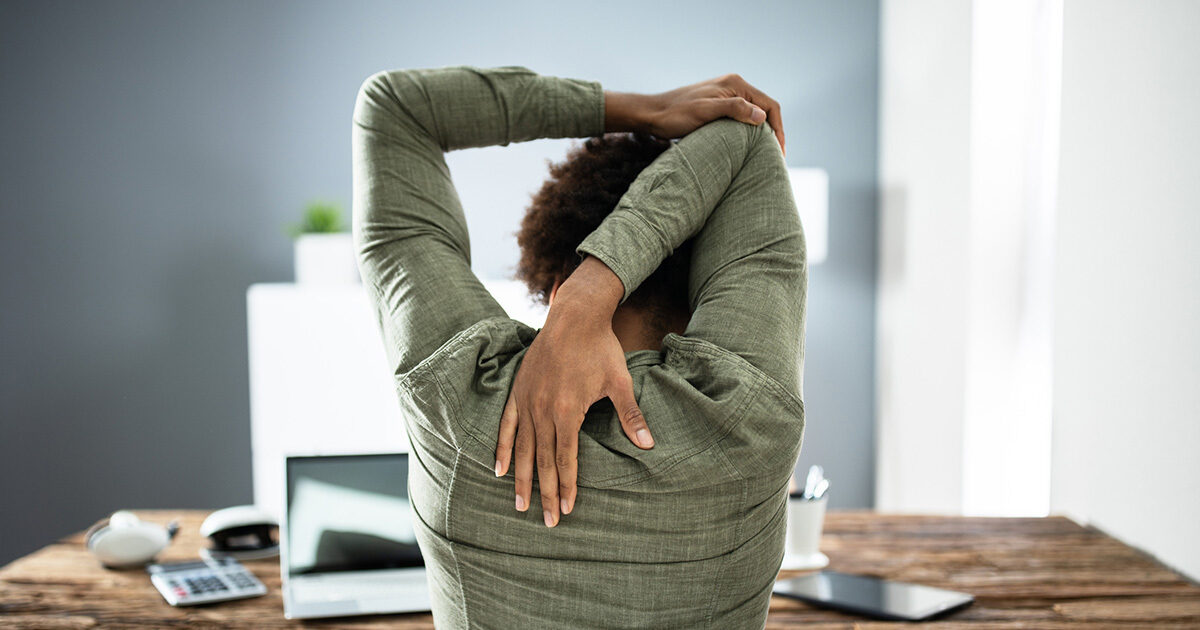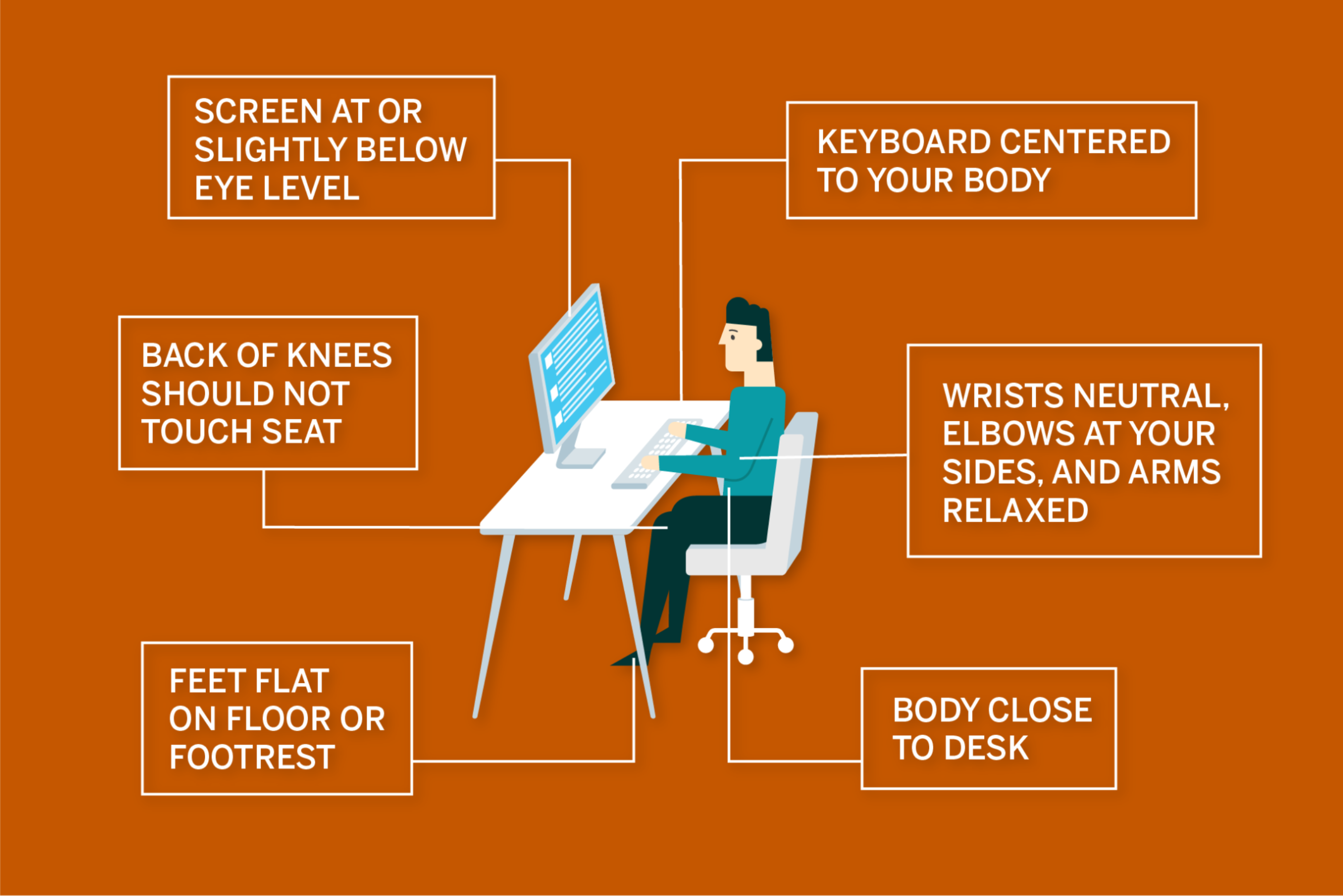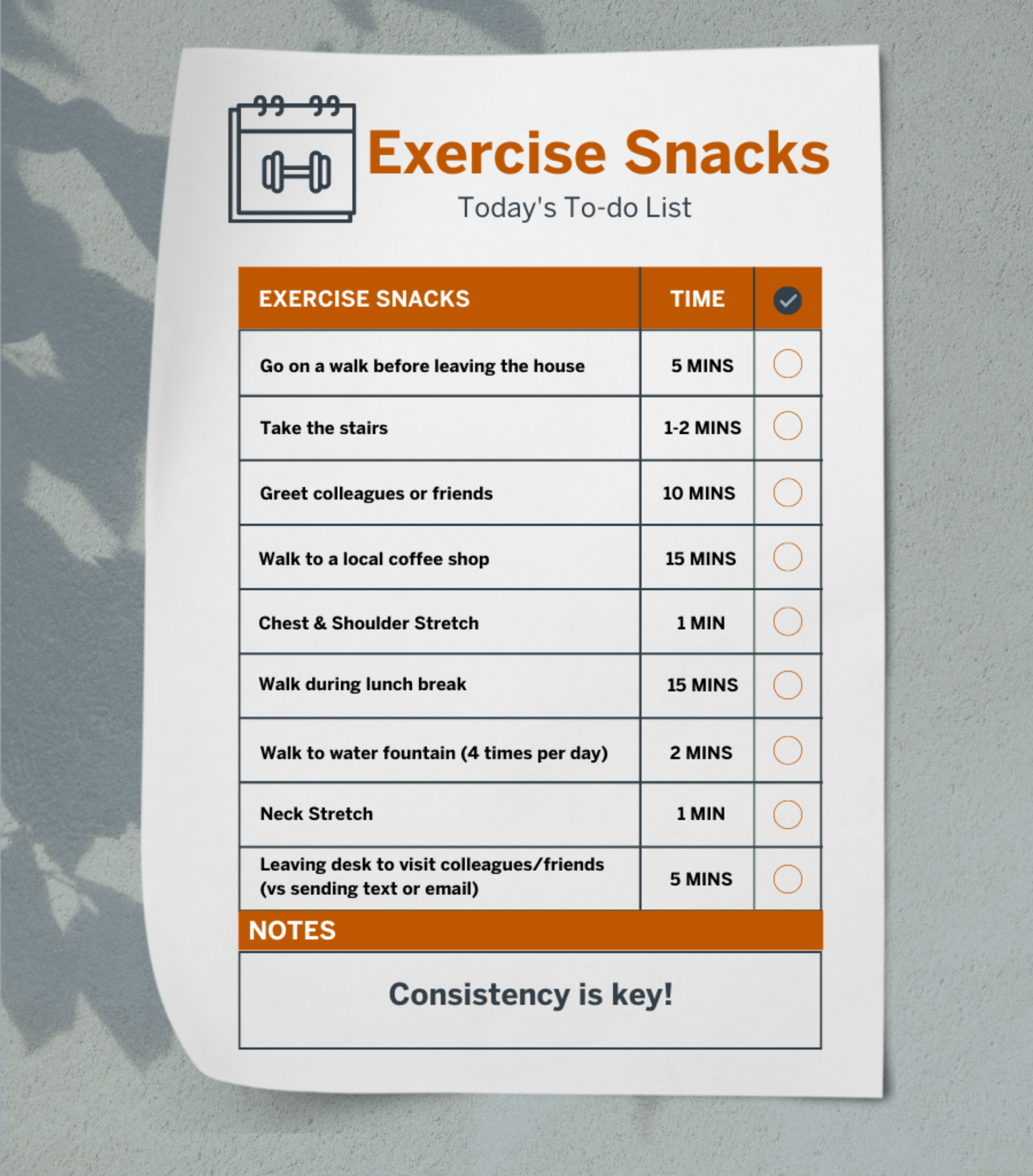Staying Healthy When You Sit All Day
UT Health Austin chiropractor shares insights on how to stay healthy and active when sitting all day
Reviewed by: Sylvia Deily, DC, Cert MDT
Written by: Kaylee Fang

During the warmer summer months, you tend to live a more active lifestyle. It’s essential to maintain that healthy lifestyle as you become more sedentary in the winter months or when returning to the daily grind of work or school.
How does sitting impact the body?
“The biggest concern associated with sitting is the lack of movement,” says Sylvia Deily, DC, Cert-MDT, a licensed chiropractor in UT Health Austin’s Back and Neck Pain Center within the Musculoskeletal Institute.
The development of inflammation, joint pain, and other major health conditions can result from prolonged sitting. Whether you’re sitting at a desk or in front of a screen, pay attention to your body as you begin to experience discomfort, soreness, or pain. Find the most supportive position where your neck, back, or other parts of the body feel comfortable. Frequently changing sitting positions, shifting weight throughout your body, and moving your joints and muscles can go a long way.
Ideal Sitting Position
“Your height, the chair you’re using, and the activity you are performing all impact the ideal sitting position,” explains Deily. “Ideal posture involves stacking the joints to use the least amount of effort for the best alignment. Sitting resembles our posture when standing neutrally. Ideal sitting or posture can’t be sustained for a long period. Sitting should include a variety of postures and frequent changes.”

To improve your posture:
- Keep feet flat on the floor or rest them on a footrest
- Position knees a bit lower than the hips by perching on the chair, using a seat wedge, or tilting the seat pan on an adjustable chair
- Sit on “sit bones” to maintain a neutral pelvis and low back position
- When typing, keep forearms parallel to the floor and shoulders relaxed
“If you’re sitting on the sit bones, also known as ischial tuberosities, that puts the pelvis in a neutral position. This supports the spine in being neutral and upright. When sitting, we have a tendency to poke the chin forward. Instead, draw the chin back slightly (similar to when you are surprised) to align the head over relaxed shoulders,” recommends Deily.
How often should I get up and walk around?
It depends on the level of activity when sitting in the office or classroom. “In general, getting up at least once an hour should be practiced. Simple ways of staying active can involve retrieving copies from the printer, walking to the water fountain, or stretching at your desk,” suggests Deily.
Different Methods for Staying Active
A quick, simple form of movement known as “exercise snacks” are a great way to implement activity into your daily routine. “Short sessions of movements, such as 5 to 10 minutes, that occur frequently can have the same effect as movement of 30 to 45 minutes once a day,” explains Deily.

From a strength training perspective, you may choose to keep dumbbells by your desk to use when participating in exercise snacks throughout the day.
Try 2 sets of 10 reps of the following:
- Squats/Hip hinges
- Lunges
- Overhead press
- Bent-over row
If at each break in your day, you perform a set of exercises, by the end of the day you can complete your whole strength training workout.
“Exercise snacks are a healthier alternative for a break than scrolling through your phone or eating a sugary snack,” notes Deily. “Setting a reminder of when to do these simple movements can be helpful. It might be easy to dismiss the alerts but consider the significant impact it has on physical and mental health. Short forms of movement can boost productivity levels and enhance your mood, especially if you can make them consistent.”
Balance of Sitting and Standing
There may be challenges that limit the activity you can perform, such as meetings or working under a deadline. “In such cases, a standing desk can help add to your activity,” says Deily. “Standing for 5 to 10 minutes for each hour of sitting enables you to reduce the strain of sitting in one place for a long period and helps introduce more movement.”
When standing, you may want to shift weight from one leg to another or prop your foot up on a chair rail or footstool. However, if you notice you begin to tire and lean your body to rest your forearms on the desk, then it may be time to sit again. “Finding the balance between sitting and standing can help prevent strain and tension,” shares Deily.
Recommended Stretches
Stretching or moving keeps the muscles flexible, strong, and healthy. Below are stretches you may want to try the next time you find yourself sitting for prolonged periods of time.
Chest and Shoulder
Place your arms behind you and intertwine your fingers together. When you feel a stretch across your chest, start raising your arms. For 15 to 30 seconds, hold this stretch before releasing. This stretch opens the chest and targets the pectoral muscles.
Neck
Stretching your neck might help if you experience frequent headaches or upper back tension. Grab the side of the chair with your right arm and tilt your head to the left. If you’d like a stronger stretch, your left hand can gently pull the head to stretch the side of the neck. Hold this stretch for 20-45 seconds and then repeat on the other side.
Spine
A spinal twist can help relax back muscles and reset posture. Place feet flat on the floor, sit upright on sit bones, and begin to rotate the upper body toward the right. Place your left hand on the outside of your right knee for leverage and place the right hand on either the armrest or seatback to help deepen the stretch. Twist as far as you feel comfortable, even a small rotation can have a significant impact. Stretch for 20 to 45 seconds, then switch to the opposite side.
Hamstring
Extend the right leg forward while keeping the left foot flat on the floor. Sit tall with your head in line with your spine, begin to fold forward reaching the right foot. Hold this stretch for 15 to 30 seconds, and then repeat on the other side. This stretch helps to relieve leg discomfort and keep your hamstrings loose.
“In a fixed environment, strive to maintain activities where you feel productive and supported,” encourages Deily. “Pay attention to routines at home that help get you through the day that can be adopted in the office or classroom setting, and be sure to listen to your body and build in those natural breaks so that you feel that freedom of movement throughout the day.”
For more information about the Back and Neck Pain Center or to request an appointment, call 1-833-UT-CARES (1-833-882-2737) or visit here.
To learn more about the Musculoskeletal Institute, visit here.